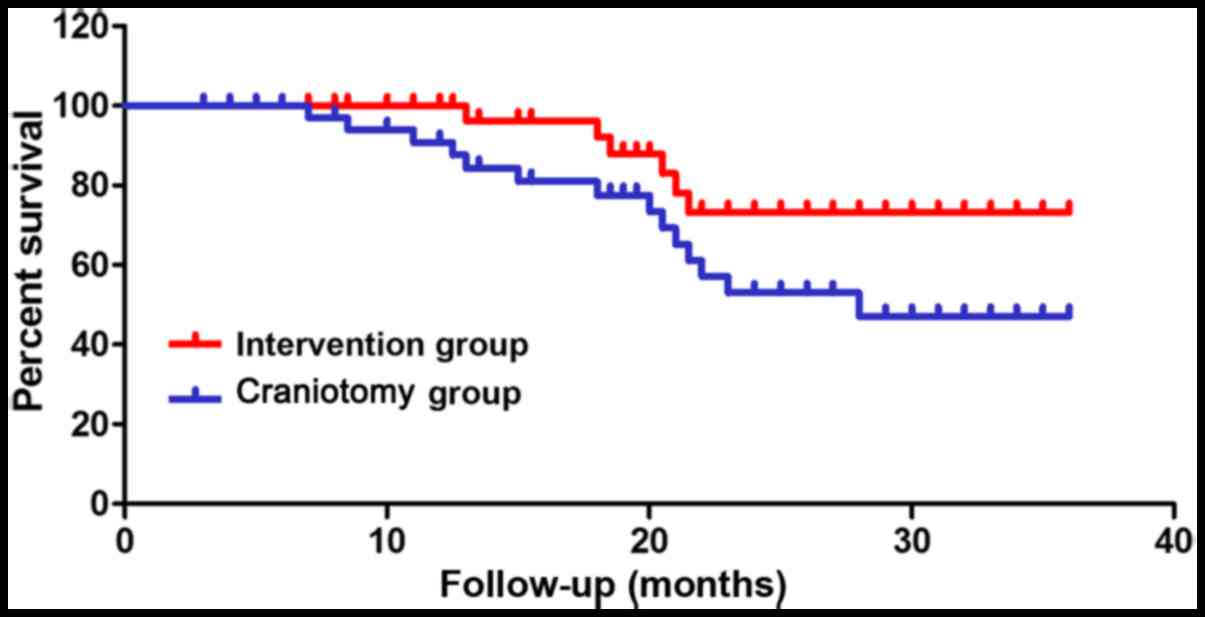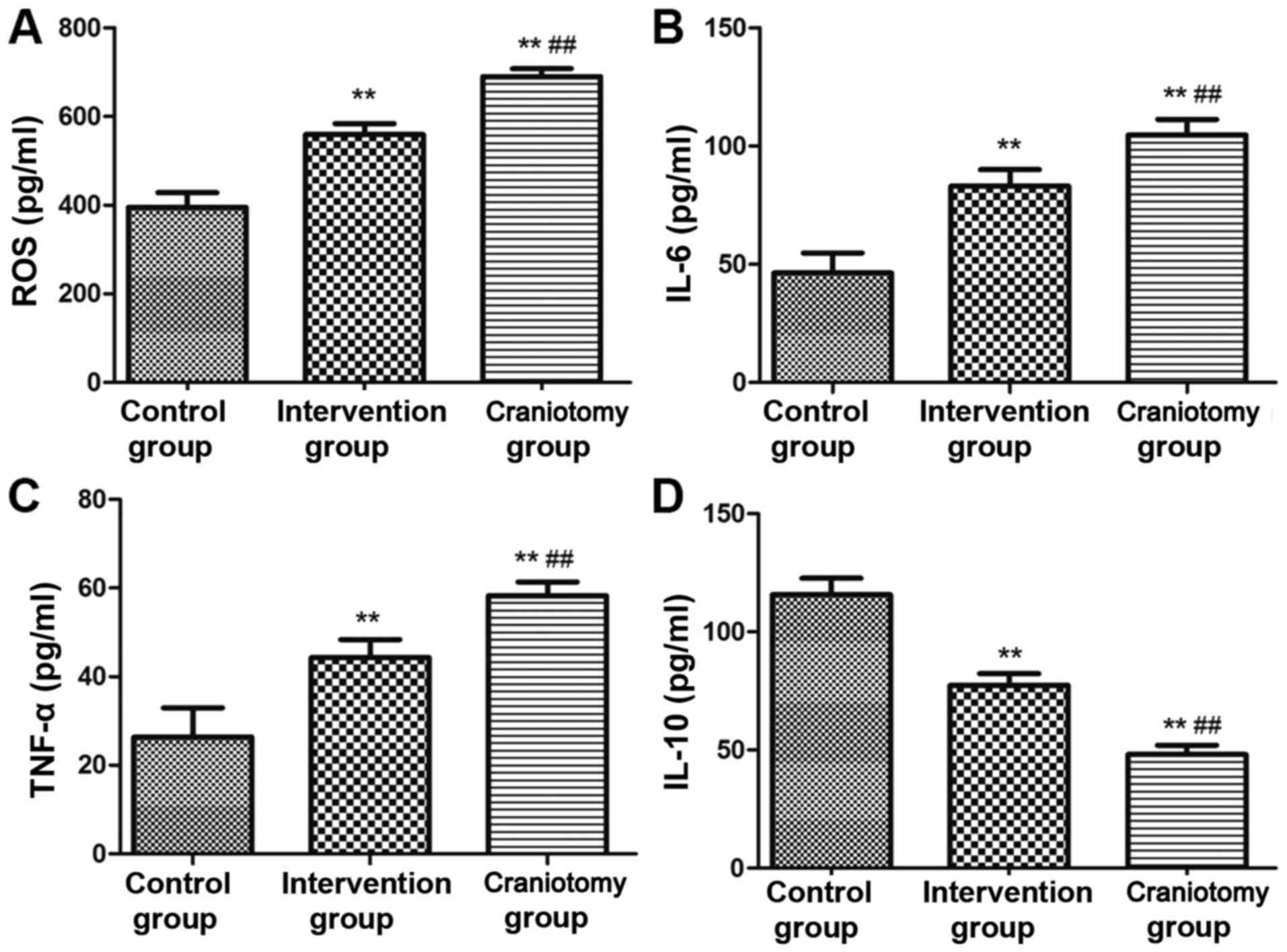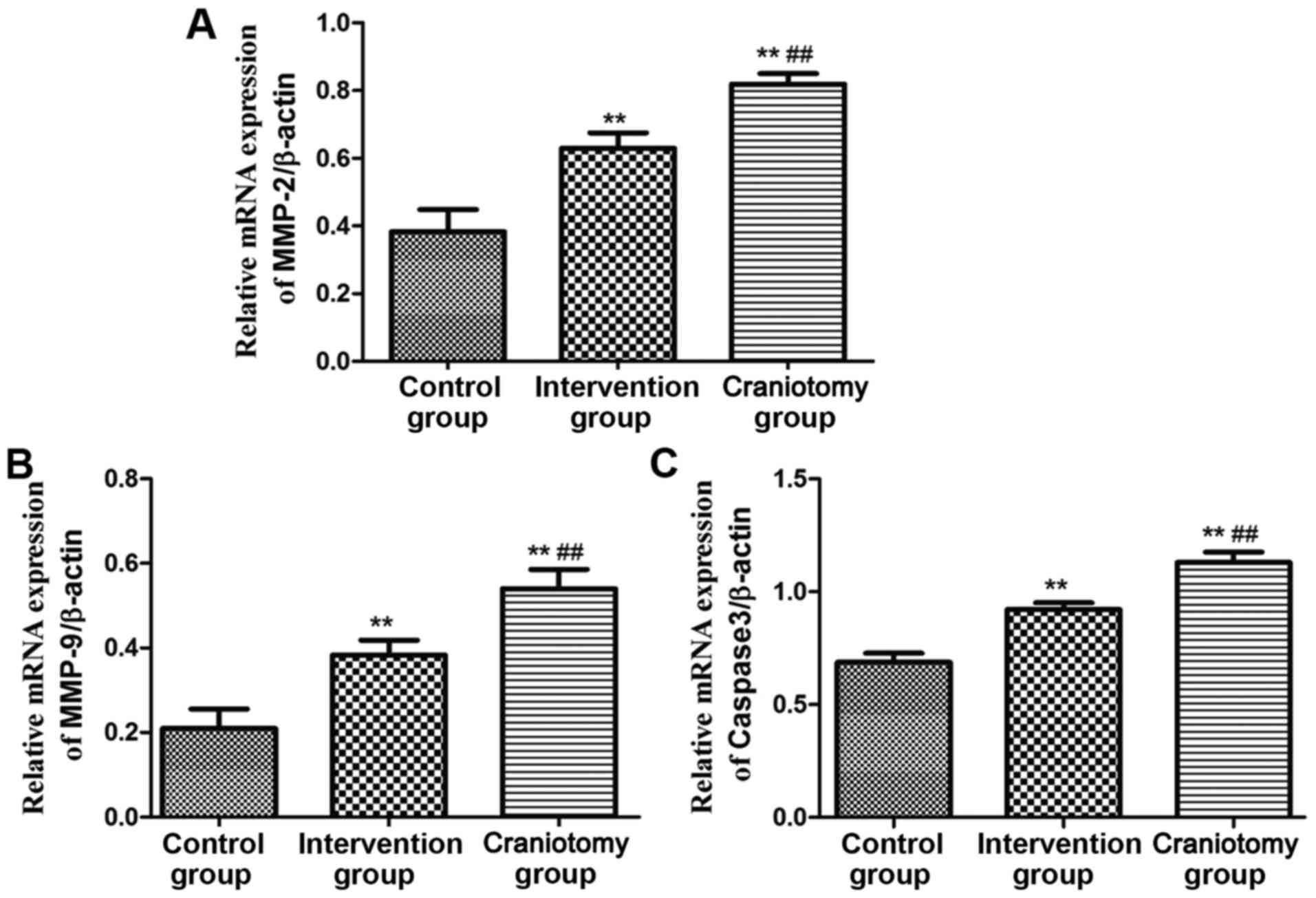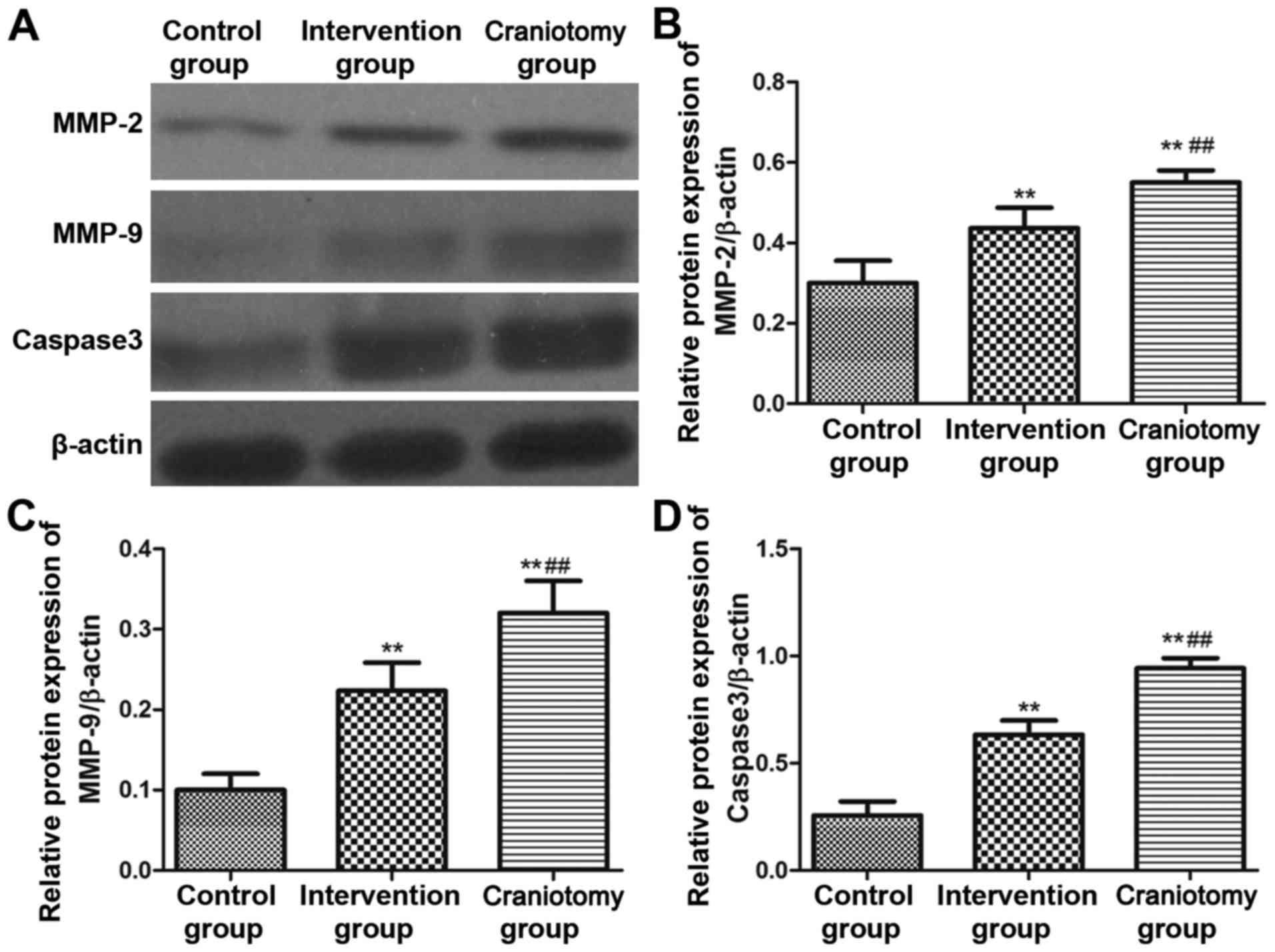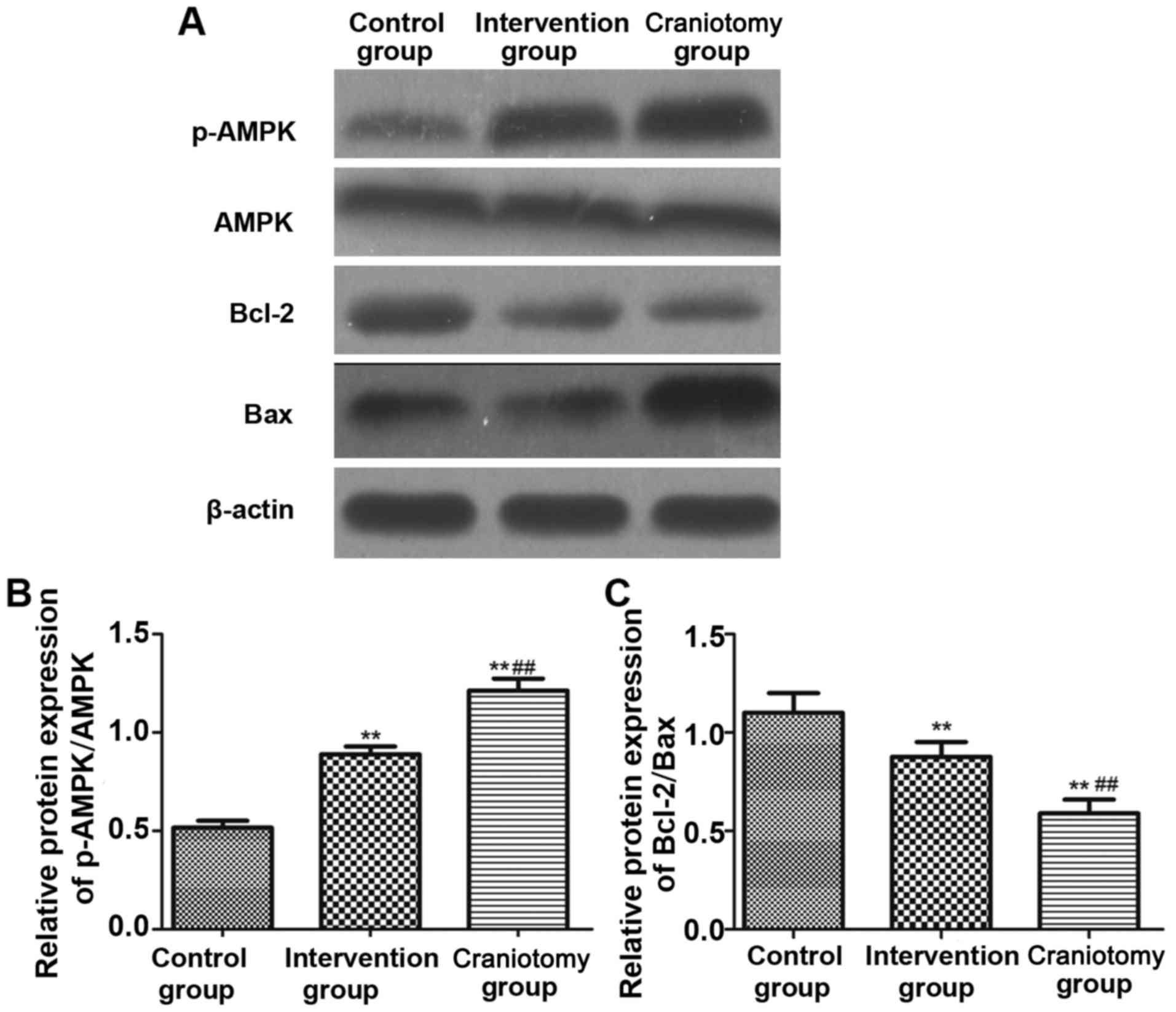The effect of intravascular interventional embolization and craniotomy on MMP-2, MMP-9 and caspase3 in serum of intracranial aneurysm patients
- Authors:
- Published online on: September 14, 2018 https://doi.org/10.3892/etm.2018.6740
- Pages: 4511-4518
Metrics: Total
Views: 0 (Spandidos Publications: | PMC Statistics: )
Total PDF Downloads: 0 (Spandidos Publications: | PMC Statistics: )
Abstract
The effect of intravascular interventional embolization and surgical operation on matrix metalloprotein (MMP)-2, MMP-9 and caspase3 in serum of intracranial aneurysms was analyzed to study the mechanisms. Seventy-nine patients of intracranial aneurysms from September 2011 to August 2014 were divided into the intervention group (n=41) and the craniotomy group (n=38) based on treatment methods, and 40 cases of normal volunteers with normal physical examination were selected as the control group. Patients in the intervention group were treated with intravascular interventional embolization, and the surgical group was treated with craniotomy and no treatment was performed in the control group. The survival rate and adverse reaction rate were calculated. ELISA kit was used to detect the level of reactive oxygen species (ROS), interleukin-6 (IL-6), tumor necrosis factor (TNF-α) and IL-10 in serum; the mRNA and protein expression levels of MMP-2, MMP-9 and caspase3 in serum were detected by qPCR and western blotting; the protein expression levels of p-adenosine 5'-monophosphate (AMP)-activated protein kinase (AMPK), Bcl-2 and Bax were also detected. The survival rate of patients in the intervention group was significantly higher than that in the craniotomy group (P<0.05). The ROS level in the intervention and craniotomy groups was significantly higher than that in the control group (P<0.01), while the levels of IL-6 and TNF-α in the serum of the intervention group were lower than those in the craniotomy group (P<0.01). The mRNA and protein expression of MMP-2, MMP-9 and caspase3 of the intervention group was significantly lower than that of the craniotomy group (P<0.01). The protein expression of p-AMPK and Bcl-2/Bax in the intervention group were lower than that in the craniotomy group (P<0.01). Intravascular interventional surgery can significantly increase the patient's survival time, and effectively reduce the expression of MMP-2, MMP-9 and caspase3 in the serum of intracranial aneurysm patients. The mechanism may be through the impact of ROS levels, thereby affecting the p-AMPK and Bcl2/Bax expression.



